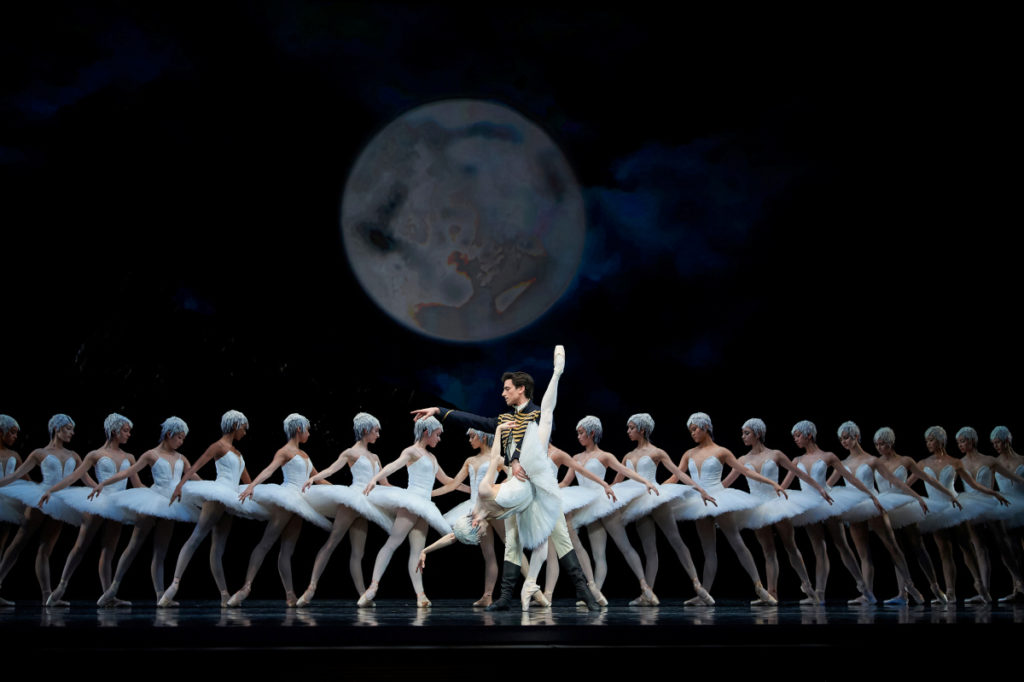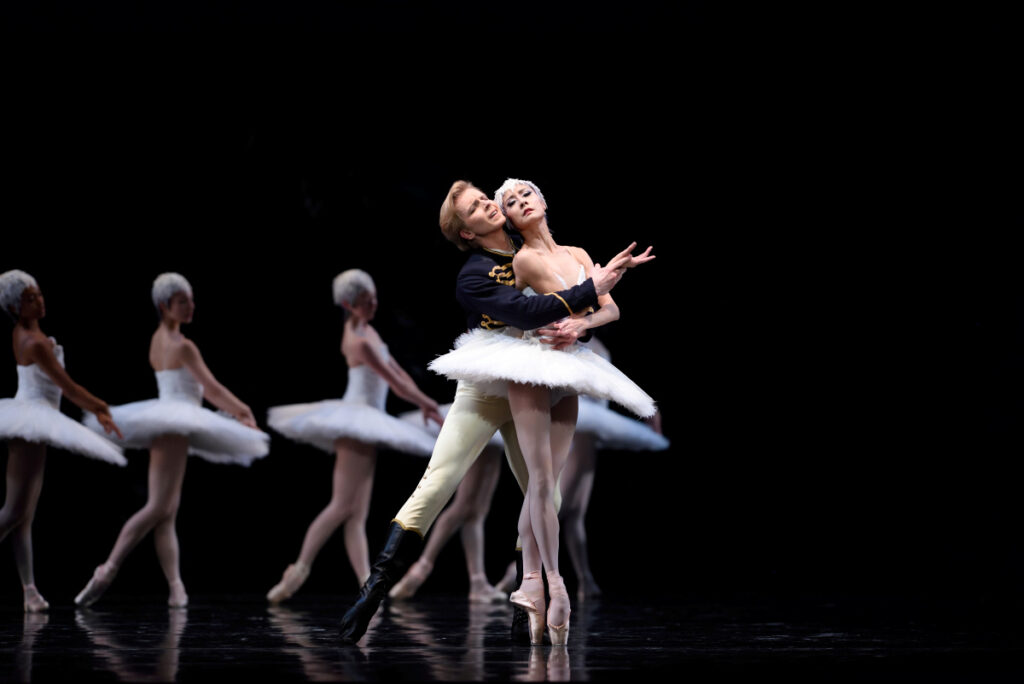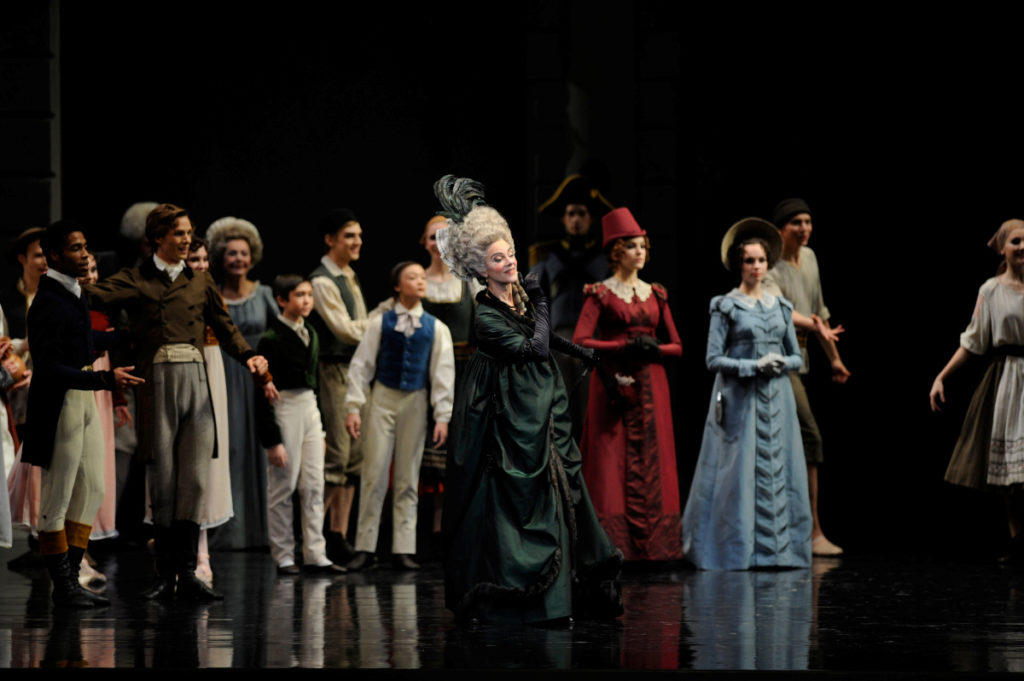About Tomasson’s Swan Lake
Ballet At Its Most Beautiful
In 1988, three years into his tenure as San Francisco Ballet’s artistic director and principal choreographer, Helgi Tomasson produced Swan Lake, one of the most beloved and enduring of classical ballets. “It’s ballet at its most beautiful,” says Tomasson. “I remember seeing films of it when I was very young, and to me, it was the ultimate in ballet.” It was also the ultimate next step in making a name for SF Ballet. “I was very proud of that production because we needed that at that time—it catapulted us [from being considered a regional troupe] into a major company,” he says. Years later, for the 2009 Season, Tomasson decided it was time to approach Swan Lake from a new perspective. Working with designer Jonathan Fensom, he created a visually fresh concept while retaining choreography that draws on the ballet’s classical heritage.

Swan Lake's Journey to SF Ballet
It’s a heritage that goes back to 1877, when Julius Reisinger choreographed the first Swan Lake at the Bolshoi Theatre. It was only moderately successful, and its composer, Peter Ilyich Tchaikovsky, considered his first attempt at writing ballet music a failure. Less that 20 years later (but after Tchaikovsky's death in 1893), Swan Lake as produced by Marius Petipa and Lev Ivanov in 1895, was considered a masterpiece.
SF Ballet acquired its first Swan Lake in 1940, choreographed by Willam Christensen, ballet master of what was then SF Opera Ballet. The Christensen Swan Lake’s long tenure ended in 1988, when Tomasson created his version, based on Petipa and Ivanov’s landmark ballet. He retained much of the choreography and all of the spirit of the Petipa/Ivanov version while making changes that clarified the story.
The 1988 production was a success, and it served the Company for 21 years. But Tomasson decided to revamp it for the 2009 Season because it had been produced “on quite a small budget, and I felt that it was time to take it to the next step,” he says. “Swan Lake is the most well-known ballet of all the full-lengths, and probably the most universally loved. I didn’t want it to become a museum piece. I felt that this was the right time [to update it], and I found the right designer.”
Designing Swan Lake
That designer was Jonathan Fensom, a Tony Award nominee (for Journey’s End in 2007) who has created costumes and sets for dozens of plays in London’s West End and on Broadway. His love for his work emerges in the animated way he talks about art. “Inevitably, your experience brings something to whatever you design. I’m constantly on a research trip,” he says. For Swan Lake he borrowed from architectural and decorative elements in San Francisco (City Hall and the War Memorial Opera House) and Paris (the Louvre).
Tomasson was intrigued by the idea of working with a designer who had not done ballet before. For Fensom, whose limited ballet viewing had included The Royal Ballet’s Swan Lake, “the thought of doing a ballet was incredibly exciting—to respect what Swan Lake was as a classical piece of work but actually lift it,” he says. “Times change; we move on. We get more sophisticated, and I think we need to push the boundaries a little farther.”
Highlighting Odette's Story
While Tomasson liked the idea of pushing the boundaries visually to give new life to this venerable ballet, his intent, as before, was to stay true to the original, choreographically and at heart. “Particularly the second act—you don’t really mess with that,” he says. “But there are so many other things you can do, scenically and with costumes, and even choreographically to some extent, in the first act and third act, which I had already done. A lot of it I kept, but there have also been elements that I have changed; it has to do with rethinking the whole production.” For example, in 1988 Tomasson replaced a waltz danced by the corps de ballet with a pas de deux for Odette and Siegfried; he wanted Siegfried to approach Odette to convey his sorrow and need for forgiveness. “For storytelling, I felt that I needed to make [them] connect in the end and explain why they both die,” he says. He kept that pas de deux in the 2009 production but chose more dramatic music for it.

The most important change in the 2009 production was the addition of a Prologue. “Helgi said that though it’s called Swan Lake, it was always Siegfried’s story because he was the character you were introduced to first,” says Fensom. “We wanted to make it Odette’s story, and to do that we needed to introduce her.” Understanding how Rothbart brought Odette under his power, making her a swan by day and a woman by night, allows viewers to accept that Siegfried, searching for meaning in his life, could live it in this glorious bird/woman. “Who is this swan that he falls in love with? I felt I needed to clarify that she is a real person that Rothbart has turned into a swan,” says Tomasson.
For this production, choreographer and designer worked in concert to present Swan Lake in a way that makes it accessible to anyone, even first-time ballet-goers who don’t know the story. The staging, environment, costumes, lighting, plus the added component of projections, combine to make the story clear and compelling. “With this new setting, it’s different,” Tomasson says. “So many people have said they felt it was more approachable, not as much of a fairy tale.”
Creating the World of Swan Lake
Perhaps that’s because the visual components of this Swan Lake are sleek and contemporary; yet they still echo the ballet’s centuries-old themes and emotions. Fensom chose one dominant scenic element for each set: simple, striking, and symbolic. The first-act set, a barrier instead of the more traditional garden, “represents the oppression that Siegfried feels. He’s trapped,” Fensom says. The lake, black and ominous, is, in his words, “raw and rough and wild.” And behind the elegant, abstract architecture of the third act, a vestige of Siegfried’s lakeside encounter reminds us that he is now torn between two worlds.
The starkness of the open stage emphasizes the scale of the set pieces and the sculptural nature of their design—and for Fensom, the latter is key. Early in the ballet’s creation, he spoke of his plans to discuss with lighting designer Jennifer Tipton “the sculptural qualities of what we have in the space, because we light dancers by the essence of them—they are sculptural forms in space, and I wanted to treat the set in the same way.”
Fensom’s costume designs reflect this sensibility as well. With the same elegance and simplicity as the sets, the silhouettes have depth that adds individuality to the characters. “I wanted to treat it much more like an opera chorus, where everyone is different,” says the designer. “We create a world where they’re all individuals who, at a wonderful moment, come together and dance. When you think of something like the early 19th century, older people would wear silhouettes that were from slightly earlier, say from the 1790s. Peasants would have a completely different silhouette because they’re working class. So we’ve created a world that real characters inhabit.”

Creating that world involved artists and craftspeople in two countries, at the SF Opera scenic and costume shops and seven individual costume makers in and around London, Fensom’s home base. Natural fabrics like silks and linens add richness to the period costumes. At the cavernous scene shop, drawings and construction plans, samples of decorative details, and spreadsheets and flowcharts were in use long before construction began. The sets’ scale and function required that they be built with plywood and aluminum, which are more structural than typical theatrical materials such as Styrofoam and flats (canvas-covered wooden frames). Making the job more complex was the fact that the sets had to be built in pieces that would fit into a truck for touring. Other challenges included requirements for scene changes, like one gigantic piece that rolls onstage but can’t appear to be on wheels.
A Dancer's Perspective
All of this, of course, is done in service of the dancing. For many young, aspiring ballerinas, Swan Lake is a dream ballet with the added appeal of a dual role. It was the first principal role danced by Principal Dancer Yuan Yuan Tan after she joined the Company as a soloist in 1995. Coaching her for her debut in the role was Irina Jacobson, a former Kirov Ballet (now Mariinsky) dancer and associate director of the San Francisco Ballet School, and an authority on 19th- and 20th-century ballets. “Irina was very tough,” Tan says. “I remember I was very challenged. But I did it and it was good.”
Asked if she has a preference for Odette (the White Swan) or Odile (the Black Swan), Tan says no. “They’re so different,” she says. “They have their own way of doing things.” But ask her if she has a favorite scene or moment in the ballet and she turns mischievous: “When I jump off the cliff,” she says, laughing. “Just kidding.” She turns serious again when talking about the need to grow in this dual role over time. Dancing the role now compared to when she was 19, for example, she says, “you feel different, the physique is different—artistically too, how you make it convincing.”
by Cheryl A. Ossola
Header Image: San Francisco Ballet in Tomasson’s Swan Lake // © Erik Tomasson








